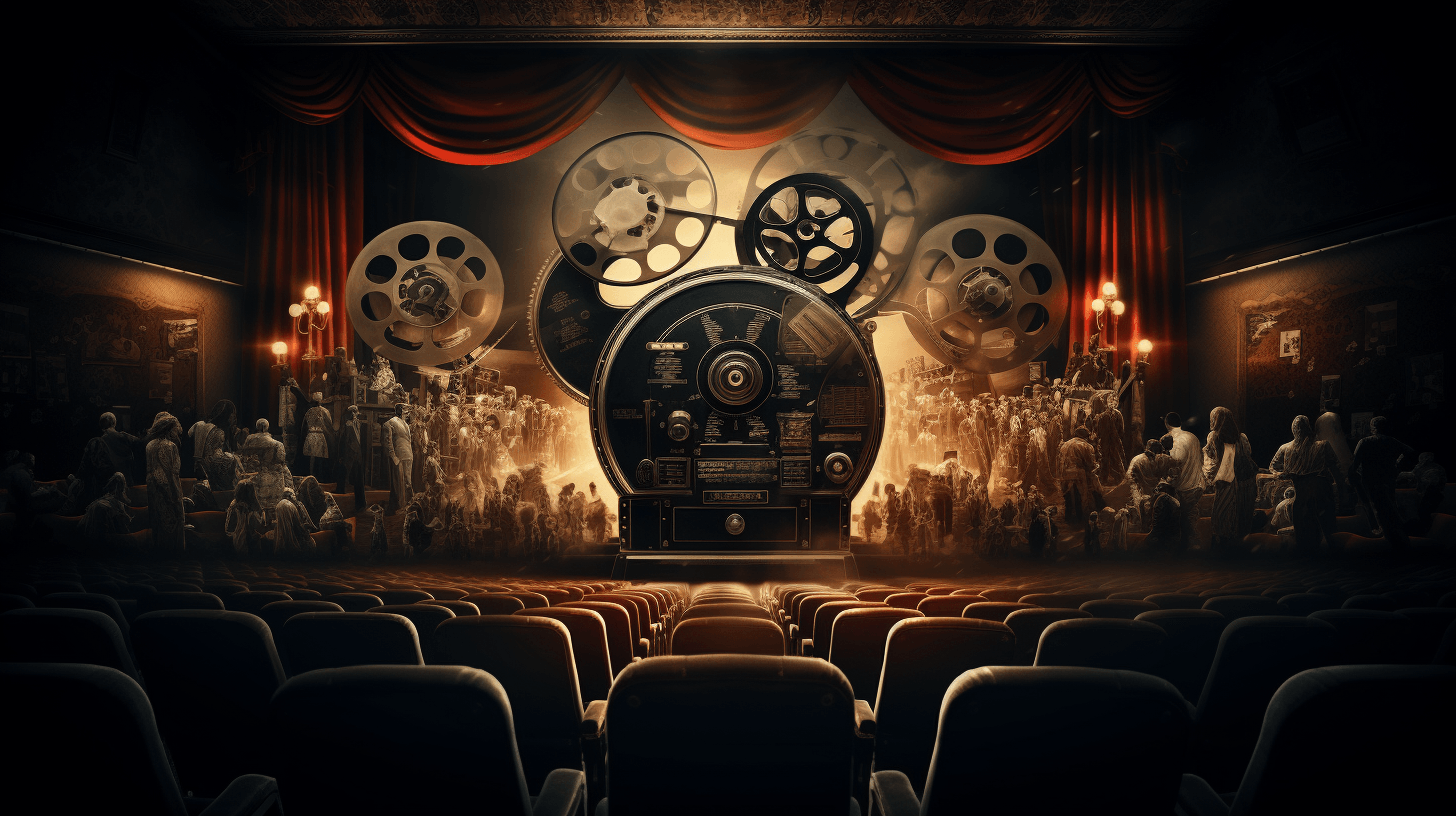Decoding cinema: A deep dive into film studies and its language
Film is more than just moving images on a screen—it's an art form with its own language and vocabulary. Like a literary masterpiece or a timeless painting, every film is a complex tapestry woven from multiple cinematic techniques, narrative elements, and visual cues.


Whether you're a director, screenwriter, or cinephile, understanding these components will deepen your appreciation of cinema and broaden your understanding of what it means to tell stories through this powerful medium.
Introduction
If you're captivated by cinema, chances are, you've always wanted to delve into its intricate language. If you've ever been involved in filmmaking, you're aware that it's not just about 'cut' and 'action'. From mise-en-scène to film theory, each aspect serves as a syllable in the greater language of cinema.
Understanding film analysis and techniques
Film Analysis is an invaluable skill set that goes beyond the scope of being a critic. For professionals in the industry, understanding the specifics of cinematic language is crucial for meaningful storytelling and effective communication with the audience.
- 📝 Cinematic Techniques: Think of Alfred Hitchcock and his groundbreaking use of the "dolly zoom" in "Vertigo", which forever changed the landscape of cinematic techniques to depict suspense and disorientation.
- 🤔 Semiotics in Film: Symbolism is at the heart of cinema. Take the recurring use of oranges in "The Godfather" series, which film scholars agree is a signifier of impending doom or death.
- 🎭 Mise-en-scène: If you consider Fritz Lang's 1927 magnum opus "Metropolis", you'll realize how much mise-en-scène contributes to a film. A whopping $200,000 was spent on sets alone, underscoring the importance of every minute visual detail.

Exploring cinematography, narrative structure, and genres
When the right shot can say a thousand words, you're delving into the magic of cinematography. Couple that with a compelling narrative structure, and you’ve got the makings of a masterpiece.
- 🎥 Cinematography: Remember Gordon Willis, the Director of Photography for "The Godfather"? His pioneering low-light compositions earned him the nickname "The Prince of Darkness".
- ✂️ Film Editing: The impact of editing can't be overstated. Take Walter Murch and his rule of six, which offered a new paradigm for editing that focused on emotional content and storytelling.
- 📖 Narrative Structure: Quentin Tarantino shattered conventional norms with "Pulp Fiction", presenting a nonlinear narrative that still keeps the audience engaged. The risk was worth it, garnering $213.9 million at the box office.
- 🏰 Film Genres: When we trace back to the roots of genres, we find films like "The Great Train Robbery" from 1903 laying the foundation for the Western genre.

Film aesthetics, symbolism, and character development
Cinema is not just a mirror reflecting reality but a hammer with which to shape it, as the saying goes. This section is where the art in the heart of cinema truly comes to life.
- 🎨 Film Aesthetics: Stanley Kubrick's meticulous attention to symmetry isn't just a directorial whim; it's an aesthetic choice that can communicate a film's themes without a word of dialogue.
- 🔮 Symbolism in Film: Ingmar Bergman's "The Seventh Seal" goes beyond mere storytelling, using the game of chess as a profound metaphor for life, death, and the human condition.
- 🎭 Character Development: Consider Daniel Day-Lewis, who spent months in isolation to fully become Daniel Plainview in "There Will Be Blood". Such commitment illustrates how character development transcends mere acting.

The impact of film criticism, history, and culture
As filmmakers and enthusiasts, we must consider the implications of our art form. From the reviewers who critique us to the history that precedes us, these elements mold the films we create and consume.
- 📜 Film Criticism: Andrew Sarris forever transformed film criticism with his "auteur theory," emphasizing the director's role in the final product.
- 🕰️ Film History: The Academy Award for Best Picture has a storied past, and the 1927 film "Wings" was the first ever to win this esteemed accolade.
- 🌐 Film Culture: It's not just about the art of film; it's also about its impact. "Star Wars" extended its reach far beyond the screen, generating a staggering $70 billion in merchandise alone.

The role of Screenwriting, Directing, and Production Design
The written word is the starting point of any great film. However, what distinguishes cinema from a novel or a play is the visual and auditory elements that come into play, orchestrated by the director and realized by the production team.
- 📝 Screenwriting: It's hard to believe that Ben Hecht wrote the screenplay for "Gone with the Wind" in just five days, but that's the power of brilliant screenwriting.
- 🎬 Film Direction: Steven Spielberg’s decision not to use CGI for "Jaws" is a prime example of how choices in film direction can affect an entire industry.
- 🌆 Production Design: "Cleopatra" set the bar high back in 1963 when its set was built with a then-unprecedented budget of $1 million, proving that production design is as much an art form as it is a logistical endeavor.

Understanding film music, audience interpretation, and cultural impact
Film's power to evoke emotions lies not only in its visual elements but also in its music and the way audiences interpret these components.
- 🎵 Film Music: The famous shower scene in "Psycho" wouldn't be the same without Bernard Herrmann's screeching strings. That moment revolutionized the way we perceive music in horror films.
- 🎭 Audience Interpretation: The open ending in "Inception" led to a flurry of theories, blogs, and discussions, emphasizing the importance of audience interpretation in modern cinema.
- 🌎 Cultural Impact: Who can deny the influence of "The Matrix" and its concept of a simulated reality? The film gave rise to countless debates and even academic courses on philosophy and technology.

Conclusion: The lasting impact of cinema
In understanding the many facets of cinema, we gain a deeper appreciation for its impact, both as an art form and as a cultural phenomenon. For those of us who make films, this knowledge informs every decision we make, from screenwriting to post-production.
Just as Filmustage understands the intricacies of filmmaking, offering features from script breakdown and shooting schedule to AI risk identification, so too must we strive to understand the vast language and history of cinema. Filmustage is not just a tool but a partner in realizing your cinematic vision, upholding the highest standards in film analysis and project management. And with that, your cinematic journey has only just begun. 🎬
So, set the scene, roll the cameras, and let's make movie magic!
From Breakdown to Budget in Clicks
Save time, cut costs, and let Filmustage’s AI handle the heavy lifting — all in a single day.